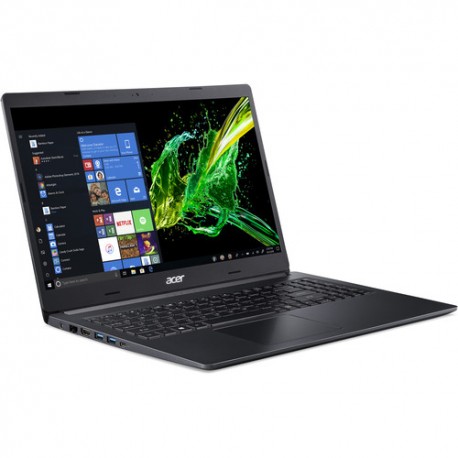Brand New Laptops
Viewed products
-

Acer 15.6" Aspire 5...
1.8 GHz (up to 4.6 GHz)Intel Core...
Acer 15.6" Aspire 5 Series Intel Core i7 laptop
NX.HDJAA.005
New
- 1.8 GHz (up to 4.6 GHz)Intel Core i7-8565U Quad-Core
- 12GB DDR4 | 256GB SSD
- 15.6" 1920 x 1080 Display
- Integrated Intel UHD Graphics 620
- Windows 10 Home 64 bit
Data sheet
| PROCESSOR | 1.8 GHz (up to 4.6 GHz)Intel Core i7-8565U Quad-Core |
| MEMORY: | 12 GB 260-Pin SO-DIMM |
| HARD DRIVE: | 256 GB Solid State |
| OPTICAL DRIVE: | None |
| NETWORK: | RJ45 (Gigabit), Wi-Fi 5 (802.11ac); Dual-Band (2.4 & 5 GHz), Bluetooth 4.0 |
| DISPLAY | 15.6" 1920 x 1080 Display |
| GRAPHIC CARD | Intel UHD Graphics 620 |
| WEBCAM: | User-Facing: 720p |
| AUDIO | Built-In Speakers, Built-In Microphones |
| KEYBOARD: | Notebook Keyboard with Backlight, Number Pad |
| POINTING DEVICE: | TouchPad |
| INPUT/OUTPUT | 1 x USB Type-A (USB 3.1 / USB 3.2 Gen 1) 2 x USB Type-A (USB 2.0) 1 x USB 3.1 / USB 3.2 Gen 1 1 x HDMI 1 x 1/8" / 3.5 mm Headphone Output |
| EXPANSION SLOTS: | 1 x SD (Unspecified Type) |
| A/C ADAPTER: | Auto Sensing 110-240 Volts |
| BATTERY: | 4-Cell: 3220 mAh Lithium-Ion up to 7 hours |
| OPERATING SYSTEMS: | Windows 10 Home 64 bit |
| OTHER FEATURES: | Kensington Lock Slot |
| CONDITION: | Brand New |
| WARRANTY: | 1 Year Warranty |
More info
Designed for the classroom or the office, the obsidian black Acer 15.6" Aspire 5 Series Notebook provides the portability and performance you need to be productive.
The 15.6" display features a 1920 x 1080 screen resolution and a 16:9 aspect ratio. You can also output to an external display via the HDMI port. Visuals are handled by the integrated Intel UHD Graphics 620.
The system is powered by an 8th Gen Coffee Lake 1.8 GHz Intel Core i7-8565U Quad-Core processor. It also has 12GB of DDR4 RAM, a 256GB solid-state drive, an SD media card reader, Gigabit Ethernet, 802.11ac Wi-Fi, Bluetooth 4.0, USB 3.1 Gen 1 Type-C, USB 3.1 Gen 1 Type-A, and USB 2.0 Type-A. Windows 10 Home is the installed operating system.









